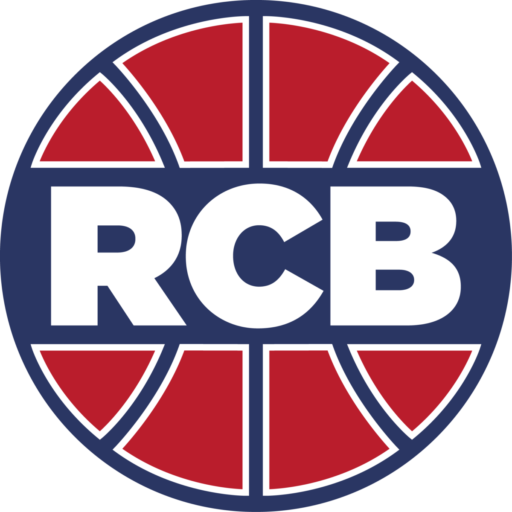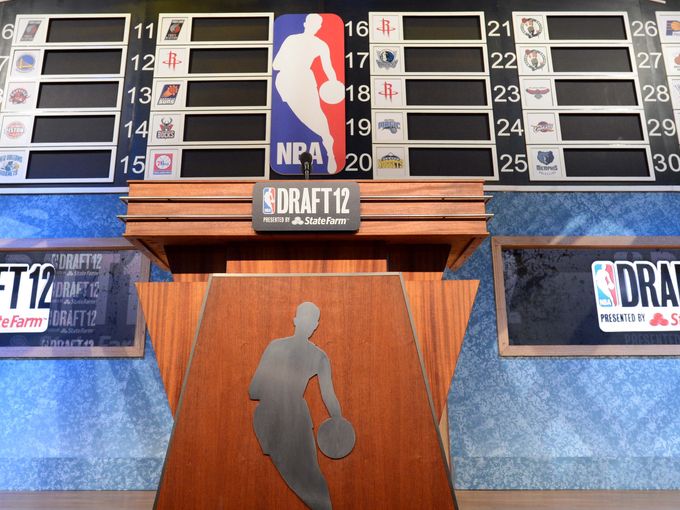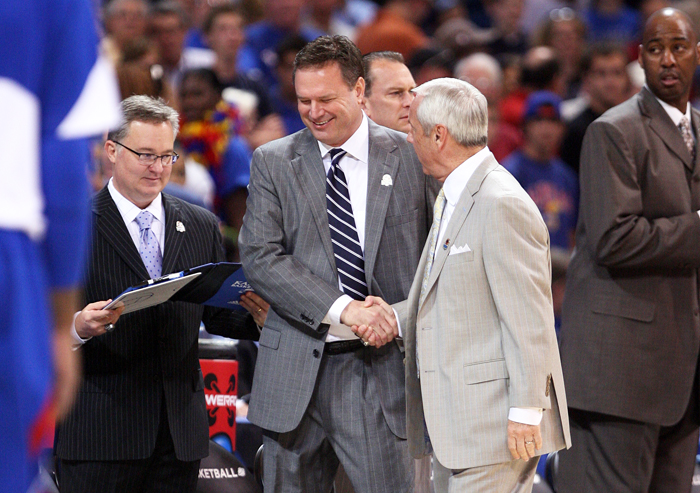Kansas will be bigger, but what will that mean?
The additions of Udoka Azubuike and Dwight Coleby, combined with the return of Landen Lucas and Carlton Bragg, will ensure that the Jayhawks’ front-court will be slightly bigger than it was last year. Though the contributions of Azubuike and Coleby are left only to speculate about at this point, the additional size that they bring to the front-court should help wear down opposing lineups.
The 2015-16 Jayhawks, according to KenPom, ranked 104th in the nation in average height at just over 6’5″. This year’s roster, excluding the redshirt seasons of both Malik Newman and Evan Maxwell, projects to be an average of 6’6″, which would slot Kansas right around 30th in KenPom’s average height statistics. While this may appear to be a small difference, the jump in roughly 70 spots in the size category may help a Kansas team that is known for its ability to wear opponents down become even more gruesome.
Last year’s front-court rotation featured Landen Lucas as the primary big, with Perry Ellis playing more of a stretch-4 type of role, allowing for plenty of spacing on the offensive end of the floor. When Lucas was off the floor, Jamari Traylor, though two inches and 20 pounds smaller, took over the rebounding, screen setting, and shot blocking duties. Though Cheick Diallo and Carlton Bragg showed flashes of brilliance, their inconsistencies meant that their roles were never fully cemented, forcing Bill Self to trim his front-court rotation to Lucas, Traylor, and Ellis.
In 2015-16, low-post scoring was at a premium. Lucas led KU bigs at 5.8 points per game, with Traylor contributing just under three points per game. Though Ellis played the traditional power-forward position, his scoring came in a variety of different ways, little of which came via traditional post play.
With the losses of last year’s top two leading scorers in Perry Ellis and Wayne Selden, Kansas will be looking players such as Carlton Bragg and Josh Jackson to pick up the slack on the offensive end. Those two, along with Frank Mason III and Devonte’ Graham, figure to feature in a Kansas offense that should be difficult to defend. Where the newcomers are most likely to contribute, however, is in the same type of role that Landen Lucas currently fills, as well as the one left behind by the departure of Jamari Traylor.
Last season, Lucas led Kansas starters in defensive rating (points allowed per 100 possessions that player is on the floor) with an absurd 91.8. When he was on the bench, Traylor replaced that type of production with an equally outstanding defensive rating of 91.4. It will be up to guys such as Azubuike and Coleby to be able to step in off the bench and be able to pick up where Lucas leaves off.
Yes, there will surely be growing pains for the newcomers, but if they are able to provide value on the defensive end while giving Lucas adequate rest, the 2016-17 Kansas front-court should have the personnel to physically wear opponents out.
Only a few short weeks until we find out for ourselves.






133 thoughts on “Kansas will be bigger, but what will that mean?”